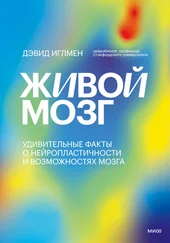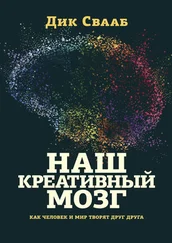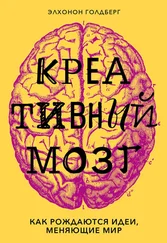Torrance E. Paul. Rewarding Creative Behavior; Experiments in Classroom Creativity. Englewood Cliffs, NJ: Prentice-Hall, 1965.
Torrance E. Paul. Are the Torrance Tests of Creative Thinking Biased Against or in Favor of ‘Disadvantaged’ Groups? Gifted Child Quarterly 15, no. 2 (1971): 75–80.
Trainor Laurel J. and Heinmiller Becky M. The development of evaluative responses to music: Infants prefer to listen to consonance over dissonance. Infant Behavior and Development Volume 21, Issue 1, 1998: 77–88, doi: https://doi.org/10.1016/S0163-6383(98)90055-8.
Turner Mark. The Origins of Ideas: Blending, Creativity, and the Human Spark. New York: Oxford University Press, 2014.
Umberger Emily. Velázquez and Naturalism II: Interpreting Las Meninas. Anthropology and Aesthetics 28 (1995): 94–117.
Underwood Emily. Tissue Imaging Method Makes Everything Clear. Science 340, no. 6129 (2013): 131–132.
Van der Veen Wouter and Ruger Axel. Van Gogh in Auvers. New York: Monacelli Press, 2010.
Vangelova Luba. Harnessing Children’s Natural Ways of Learning. Mind Shift. October 23, 2013. Accessed April 27, 2014, http://blogs.kqed.org/mindshift/2013/10/harnessing-childrens-natural-ways-of-learning.
Vaughn Donald A. and Eagleman David M. Spatial warping by oriented line detectors can counteract neural delays. Frontiers in Psychology, 4:794 (2013).
Visscher P. Kirk, Seeley Thomas, and Passino Kevin. Group Decision Making in Honey Bee Swarms. American Scientist 94, no. 3 (2006): 220.
Volokh Eugene. The Origin of the Word ‘Guy’. Washington Post. May 14, 2015. Accessed May 5, 2016, https://www.washingtonpost.com/news/volokh-conspiracy/wp/2015/05/14/the-origin-of-the-word-guy.
Waldrop M. Mitchel. The Dream Machine: J.C.R. Licklider and the Revolution That Made Computing Personal. New York: Viking, 2001.
Walker Mark, Gröger Martin, Schlüter Kirsten, and Mosler Bernd. A Bright Spark: Open Teaching of Science Using Faraday’s Lectures on Candles. Journal of Chemical Education 85, no. 1 (2008): 59.
Wearing Judy. Edison’s Concrete Piano: Flying Tanks, Six-Nippled Sheep, Walk-on-Water Shoes, and 12 Other Flops from Great Inventors. Toronto: ECW Press, 2009.
Weber, Bruce. Tony Verna, Who Started Instant Replay and Remade Sports Television, Dies at 81. New York Times. January 21, 2015.
Weber Robert J. and Perkins David N. Inventive Minds: Creativity in Technology. New York: Oxford University Press, 1992.
Wells Pete. Restaurant Review: Eleven Madison Park in Midtown South. New York Times. March 17, 2015. Accessed May 11, 2016, http://www.nytimes.com/2015/03/18/dining/restaurant-review-eleven-madison-park-in-midtown-south.html?_r=0.
White Lynn. The Invention of the Parachute. Technology and Culture 9, no. 3 (1968): 462, doi: 10.2307/3101655, http://www.jstor.org/stable/3101655.
Wilson Edward O. The Future of Life. New York: Random House, 2002.
Wilson Edward O. Letters to a Young Scientist. New York: Liveright, 2013.
Wilson J. Tuko. The Static or Mobile Earth. Proceedings of the American Philosophical Society, Vol. 112, No. 5 (1968): 309–320.
Wolf Gary. Steve Jobs: The Next Insanely Great Thing. Wired. February 1, 1996. Accessed August 21, 2015, http://archive.wired.com/wired/archive/4.02/jobs_pr.html.
Wood Bayden R., Bambery Keith. R., Dixon Matthew W. A., Tilley Leann, Nasse Michael J., Mattson Eric, and Hirschmugl Carol J. Diagnosing Malaria Infected Cells at the Single Cell Level Using Focal Plane Array Fourier Transform Infrared Imaging Spectroscopy. Analyst 139, no. 19 (2014): 4769.
Workshop Proceedings of the 9th International Conference on Intelligent Environments, edited by Juan A. Botía and Dimitris Charitos. Amsterdam: IOS Press Ebooks, 2013. Accessed August 21, 2015, http://ebooks.iospress.nl/volume/workshop-proceedings-of-the-9th-international-conference-on-intelligent-environments.
Wright Wilbur. Some Aeronautical Experiments. Mr. Wilbur Wright. Dayton, Ohio. Speech, Dayton, Ohio. September 18, 1901. Inventor’s Gallery, http://invention.psychology.msstate.edu/inventors/i/Wrights/library/Aeronautical.html.
Wylie Ian. Failure is Glorious. Fast Company. September 30, 2001. Accessed May 11, 2016, http://www.fastcompany.com/43877/failure-glorious.
Yavetz Ido. From Obscurity to Enigma: The Work of Oliver Heaviside, 1872–1889. Basel: Birkhäuser Verlag, 1995.
Yenigun Sami. In Video-Streaming Rat Race, Fast Is Never Fast Enough. NPR. January 10, 2013. Accessed August 19, 2015, http://www.npr.org/2013/01/10/168974423/in-video-streaming-rat-race-fast-is-never-fast-enough.
Yong Ed. Violinists Can’t Tell the Difference Between Stradivarius Violins and New Ones. Discover. January 2, 2012. Accessed July 18, 2015, http://blogs.discovermagazine.com/notrocketscience/2012/01/02/violinists-cant-tell-the-difference-between-stradivarius-violins-and-new-ones/.
Young Steve. Talking to Machines. Ingenia, no. 54 (2013). Accessed June 29, 2014, http://www.ingenia.org.uk/Ingenia/Articles/823.
Zhang Shumei and Callaghan Victor. Using Science Fiction Prototyping as a Means to Motivate Learning of STEM Topics and Foreign Languages. In 2014 International Conference on Intelligent Environments. Los Alamitos: IEEE Computer Society, 2014.
Zhu, Y.T., Valdez J.A., Shi N., Lovato M. L., Stout M.G., Zhou S.J., Butt D.P., Blumenthal W.R., and Lowe T.C. An Innovative Composite Reinforced with Bone-Shaped Short Fibers. Scripta Materiala 39, no. 9 (1998): 1321–1325.
Zimmer Carl. In the Human Brain, Size Really Isn’t Everything. New York Times. December 26, 2013. Accessed January 5, 2014, http://www.nytimes.com/2013/12/26/science/in-the-human-brain-size-really-isnt-everything.html?_r=0.
Дэвид Иглмен — нейробиолог, автор бестселлера Incognito: The Secret Lives of the Brain and Sum. Автор и ведущий номинированного на премию «Эмми» телевизионного сериала The Brain. Приглашенный профессор Стэндфордского университета, член Фонда Гуггенхейма, директор Центра науки и права. Его статьи публиковались в New York Times, Discover Magazine, The Atlantic, Slate, Wired и многих других изданиях. Регулярно участвует в передачах National Public Radio и BBC.
Энтони Брандт — композитор, профессор Музыкальной школы Шеферда в Университете Райса и художественный руководитель ансамбля современной музыки. Дважды получал награды Adventurous Programming Awards некоммерческой организации «Камерная музыка Америки» и Американского общества композиторов, авторов и издателей (ASCAP). Лауреат премии Кусевицкого, присуждаемой Библиотекой Конгресса США, соавтор статей о когнитивном восприятии музыки, опубликованных в журналах Frontiers и Brain Connectivity. Написал две камерные оперы, сочинения для оркестра и камерного ансамбля. Автор музыки ряда хореографических постановок, произведений для театра, кино, телевидения, звуковых и художественных инсталляций.
Подписывайтесь на полезные книжные письма со скидками и подарками: mif.to/cr-letter
Читать дальше
Конец ознакомительного отрывка
Купить книгу
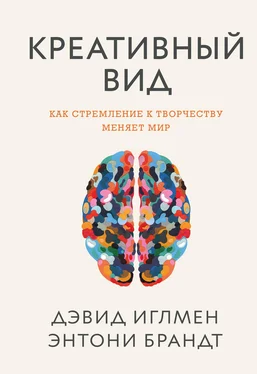
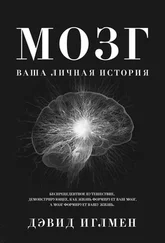
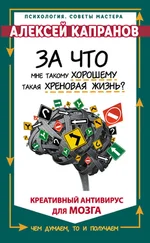

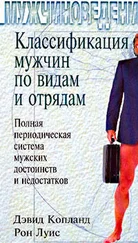
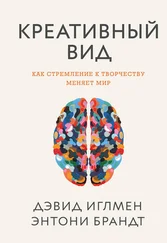
![Дэвид Иглмен - Инкогнито [Тайная жизнь мозга]](/books/416624/devid-iglmen-inkognito-tajnaya-zhizn-mozga-thumb.webp)

